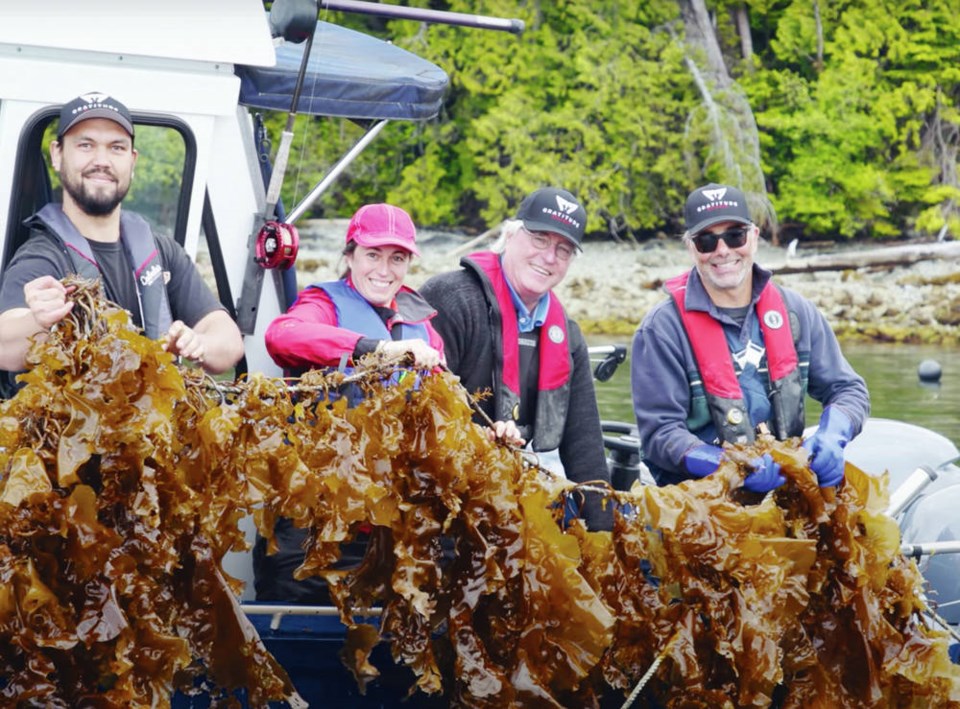A Vancouver Island business is banking on North Americans developing a taste for seaweed as it prepares to dive into the production of a variety of food products made from greens grown in the briny depths around the region.
Cascadia Seaweed, which last year established a kelp farm off the west coast of Vancouver Island, is planning to make the move from seaweed cultivation to seafood production.
“When you’re producing the raw ingredient, if you’re selling it on at that point you’re losing value – we really didn’t want to do that,” said Bill Collins, chairman of Cascadia’s board.
Cascadia, which has plans to expand both its ocean-bound kelp beds and establish a large land-locked facility to produce dulse, a red seaweed, sees a massive opportunity in developing both raw seaweed and its own products as consumers have turned to plant-based proteins as alternatives to meat.
Collins said last year more than 8,000 tonnes of seaweed was imported into North America.
“There is no reason a large portion of that can’t come from British Columbia, in fact it must if we want to meet food security concerns,” he said.
The product line, which is likely to include a seaweed jerky, chips and nori sheets among others, is still in the research and development stage, and the company has yet to develop its consumer brand.
Collins said they are focusing on the educational side of things, hoping that it will create a demand for a sa���ʴ�ý-grown product.
“We believe seaweed could be a staple of the North American diet if it’s presented right,” he said.
The first harvest from the pair of one-hectare test sites — one off the shores of Tzartus Island and the other off the shores off Seddall Island northwest of Bamfield on Nuu-chah-nulth Seafood tenures — yielded about 20 tonnes of kelp.
Collins said the harvest garnered interest from seafood companies and medical companies that could use the raw material, and it proved Cascadia could cultivate and bring in a good product.
It also helped them expand their team to add product development and branding expertise and bring in more investment to fuel expansion.
They are into a second round of friends-and-family financing to raise more than $1 million, and expect to raise more than $5 million with a broader offering.
“We are not growing fast enough. We need to grow faster to meet the demand,” said Collins.
They intend to have more than 10 times the production this coming year – the ocean beds are seeded in the fall and harvested in the spring – by partnering with First Nations around the coast.
“There is plenty of support there from First Nations who want to get into seaweed farming and own their own infrastructure,” Collins said.
Cascadia is also growing a high-protein seaweed called dulse on land in tanks, and after an experimental crop was successful at the Bamfield Marine Sciences Centre, they intend to expand and have that product in the marketplace by late fall this year.



